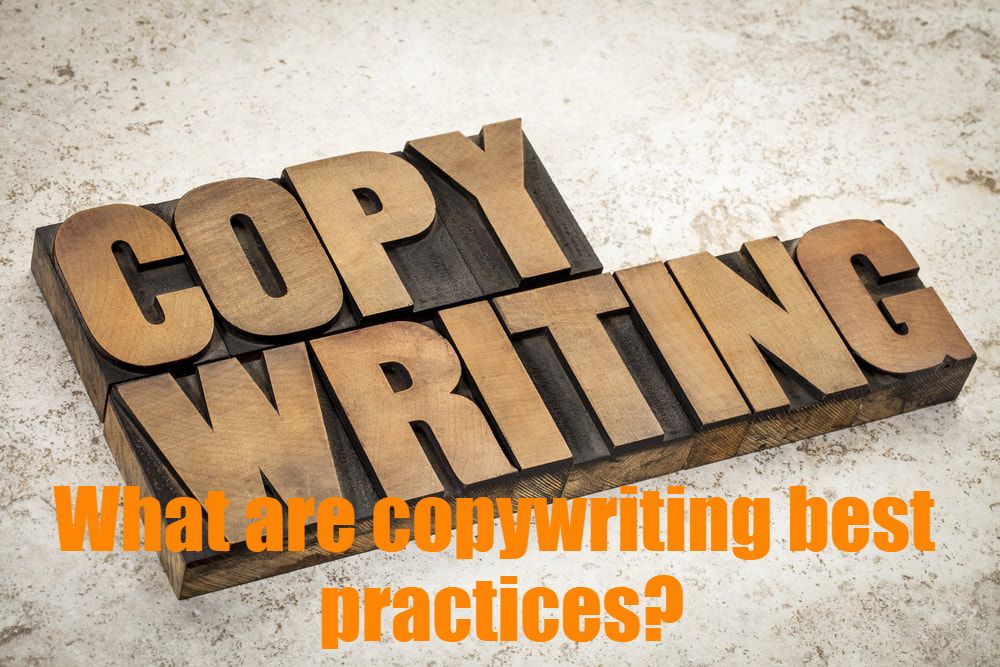What are the best practices for copywriting if you want to best reach your intended audience with a message they will actually care about?
There’s no definitive answer, but there sure are some copywriting guidelines.
Here are 7 copywriting best practice tips from my years of experience as a freelance copywriter that can help you.
Why do I say that? Because it’s true!
- The fundamentals are how you apply the basic Marketing theories
- Creativity is about approaching each project with an innovative and fresh way
- Years of experience gives you a deeper perspective about what works
- Luck is because sometimes, the best results can’t be explained with logic!
Creativity, experience and luck can’t be taught. But the copywriting fundamentals (or copywriting best practices) can be!
So, if you want some tips on how to ace your copywriting, here are my 6 copywriting best practices.
Word of warning: these copywriting best practices may seem fairly straightforward – but that doesn’t stop most copywriters, marketers and businesses from getting them wrong and then suffering the consequences (trust me! I see it every day).
These tips for copywriting best practice seem obvious but whether you do them right or overlook them, either way, you’ll get the results you deserve.
1. Identify your actual audience
The more you flesh out the identity of your ideal target customer, the easier and more successful you will find your copywriting will be.
For example, instead of saying: women between age 25 and 35, build this out a little and define them more as: businesswomen, aged between 25 and 35, putting off having children for a few years to develop their careers further in their industry (and so on).
2. Recognise their appropriate pain point
People today are self-absorbed and focused on things that are going on in their own lives. This means that they tend to ignore adverts and products that don’t fulfil a part of their life that is top of mind. However, their attention IS on current challenges that they’re actively looking for solutions for.
For example, a person may block out anything to do with painters or house painting until they see that their home is looking a little shabby and they’re keen to start selling. Suddenly, a painter becomes a focus. It’s the same for anything really – most people are resistant to anything that isn’t pertinent to them in their lives right now.
So, consider – what is a pain point that your ideal customer is looking to solve that matches your brand or product offering?
3. Define how you provide a relevant solution
For example, if your target audience is a graduate who is looking for an entry job that will help them develop their career while providing guidance, then in response, you may create a service where you nurture their emotions, expectations and skills to place them in the right role that promises career success. This is a service offering that they will notice and respond to.
Marketing today is far more effective today if you make your product fit your customer, and not make the customer fit the product.
Make your product fit your customer. Not your customer fit your product. The right copywriting message will follow.
But you can’t (or shouldn’t) put pen to paper and expect good results without these prior fundamentals first. Go back and re-read the previous 3 copywriting best practises before you move to the next.
4. Build a core message
Bring all of the above copywriting fundamentals together. How can you effectively communicate your product’s benefits in the context of your target audience’s needs?
Your audience has a problem. This your opportunity to tell them how you’re their best solution.
A core message is like your copywriting brand guidelines. It defines the valuable angle your brand takes when explaining your solution to your audience’s need in a way that inspires them to take action and convert.
How do you use words, whether that be web copy, blogs, articles, landing pages or even video scripts, to show your audience that you have the ideal answer they’re looking for?
5. Determine how, when and where to communicate it.
Is it via your website? Are you publishing content in a newsletter or an online forum?
The key is to find the channels that your customer frequently looks at, in the right frame of mind. So, while most people check Facebook, will they be in the right state on that platform? Or does your core message need tweaking to suit each platform?
A good example is the difference between a Google search and LinkedIn content. A Google search usually indicates that someone is looking for answers or a solution right then – so your message can be more pointed towards a conversion. Whereas on a social media platform like LinkedIn, users tend to be a bit more passive – so a relevant message here would be more about general brand awareness and education.
6. Measure and adapt
This means we make a lot of assumptions and well-educated guesswork to get it right. Therefore, it’s important to review how well your copywriting message is resonating with your audience so you can make informed decisions about what to do next.
Adaption is part of good copywriting practice.
7. Find the right copywriter for you
You’re time poor and spread thin, and writing isn’t your expertise. So, focus on what really matters, while we take care of all of your copywriting and content marketing needs!
For more information or to speak to a quality copywriter to get the results your business deserves, contact me now at chris@melottimedia.com.au.
I can sharpen your words to achieve your goals, today!
Christopher Melotti
Melotti Media Copywriting and Marketing Solutions
www.melottimedia.com.au
Click here to view the FAQ page for all you need to know













